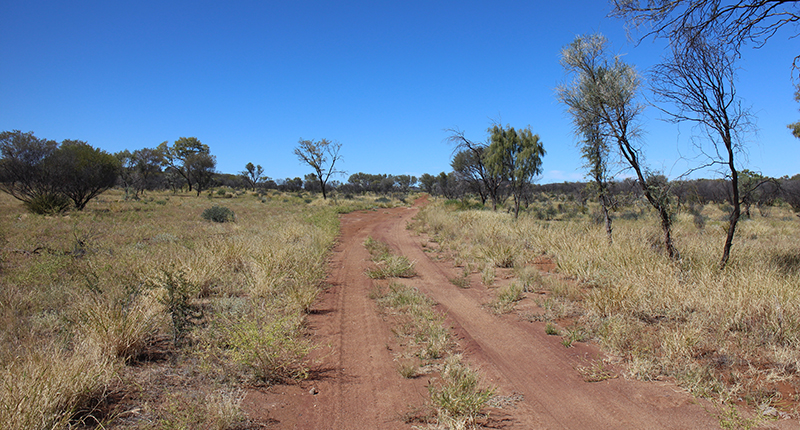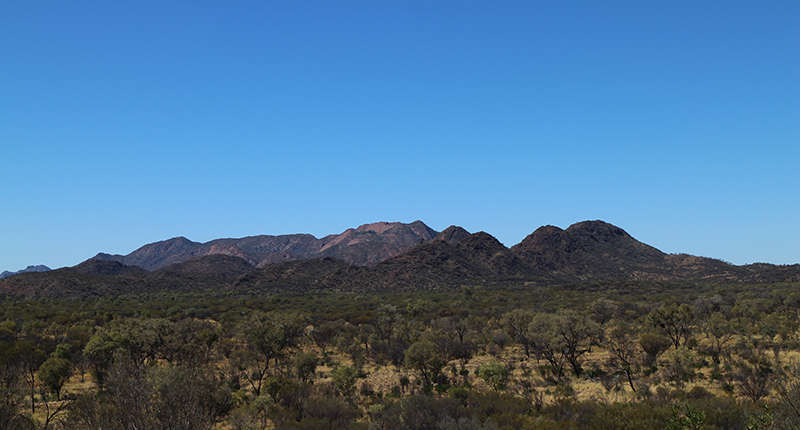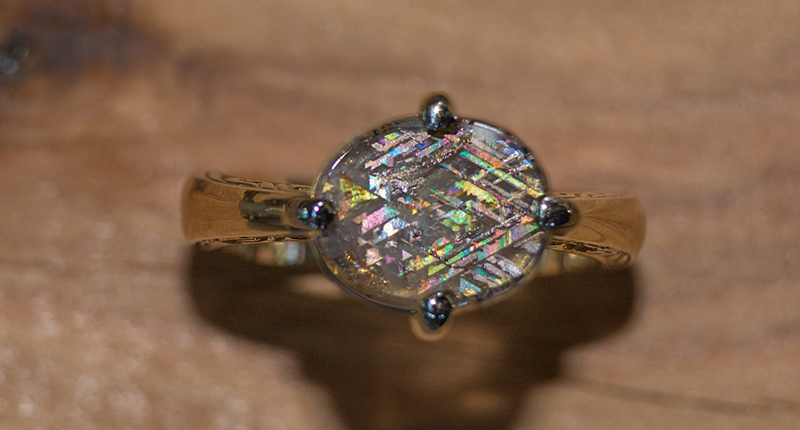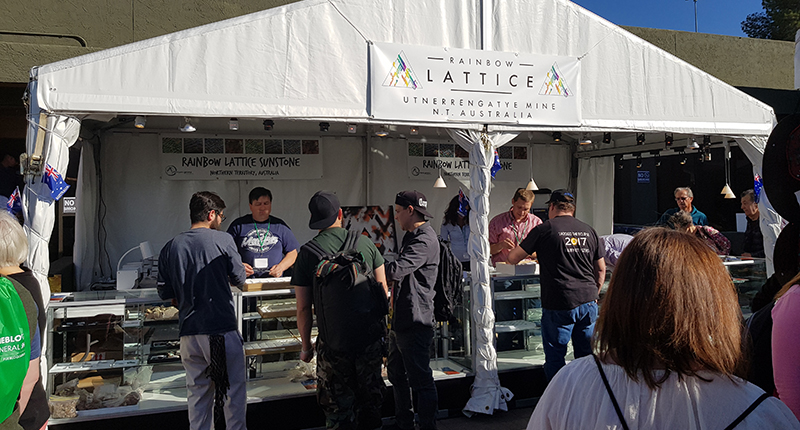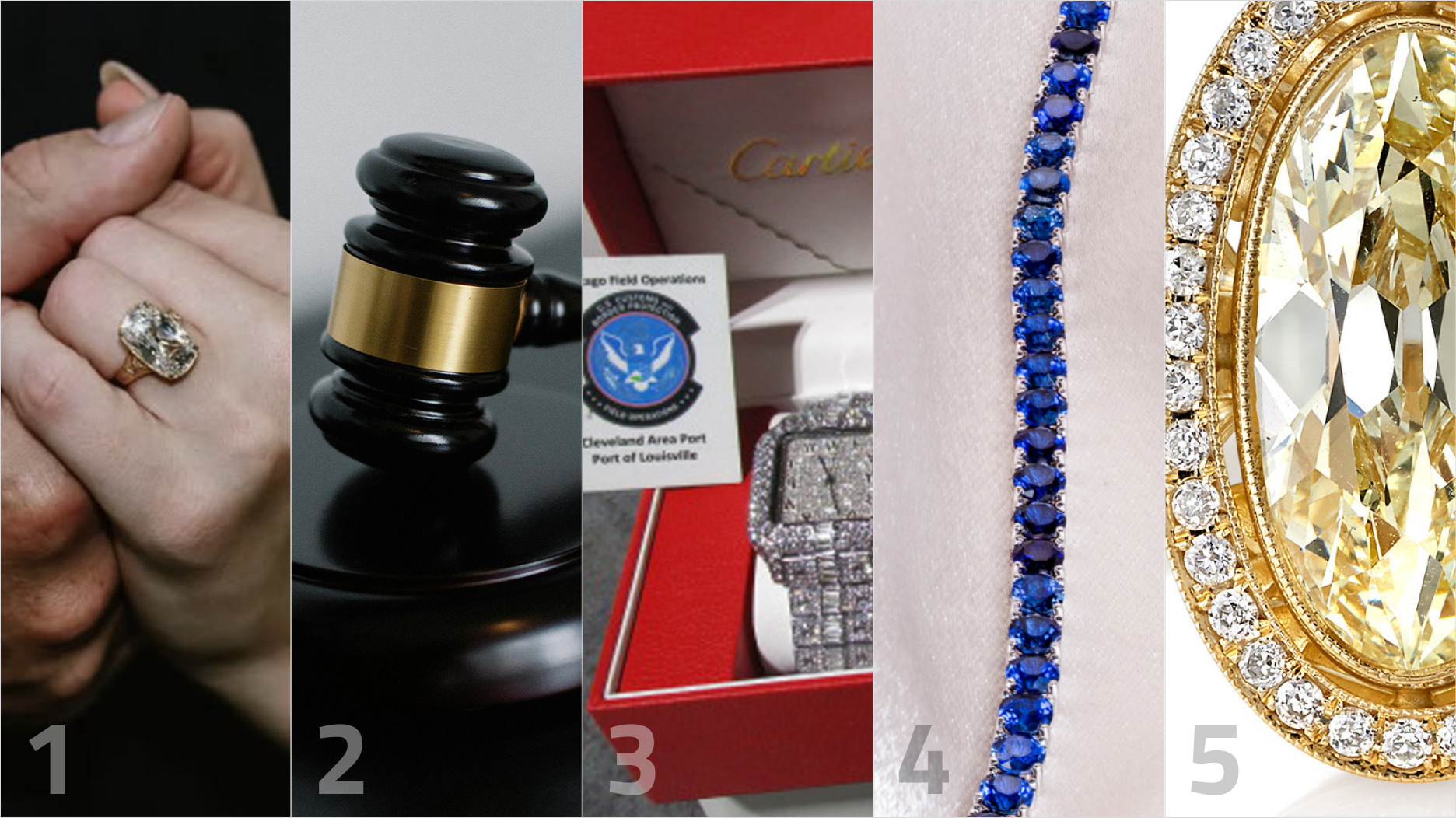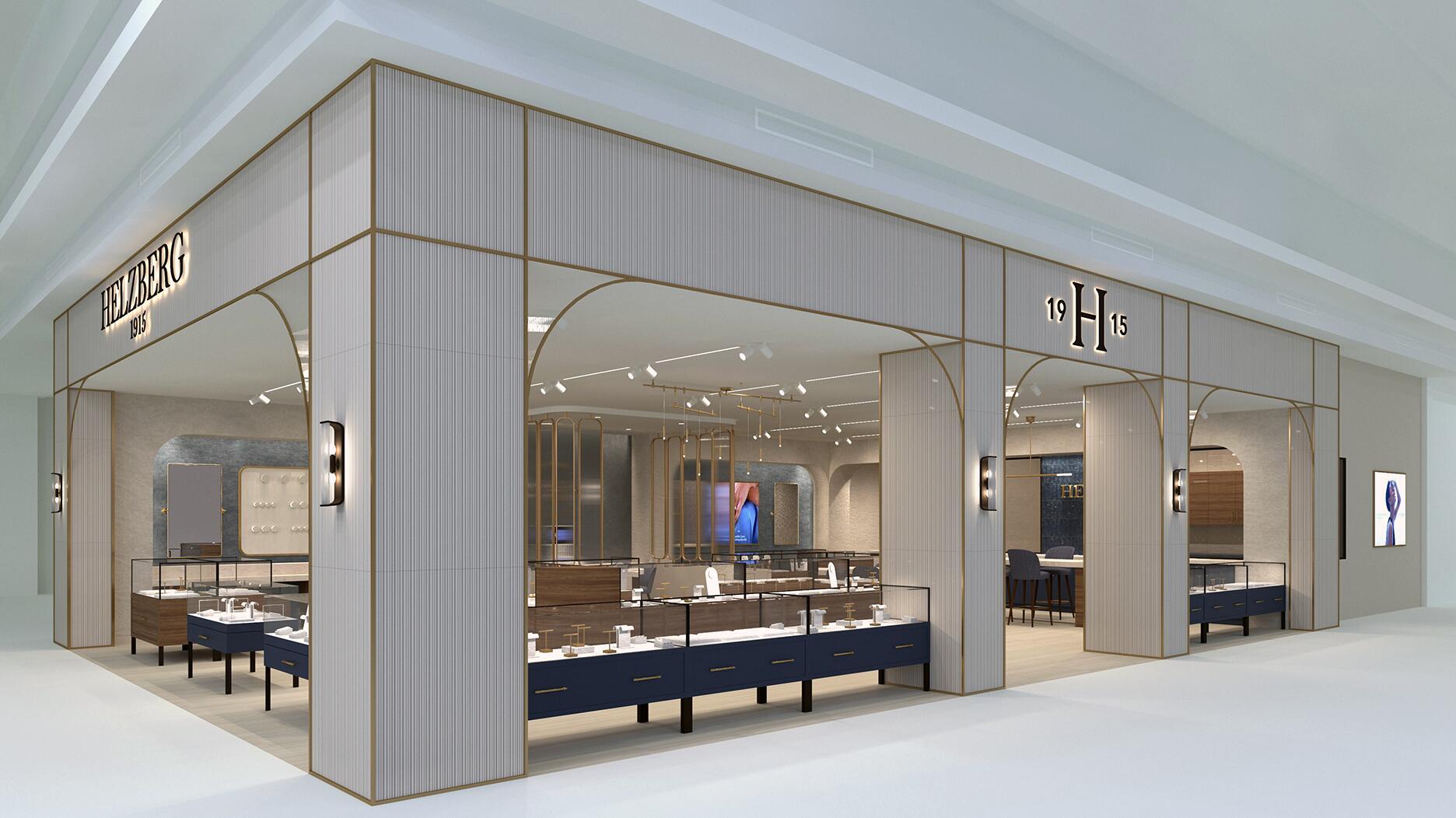Executive Chairman Richard Baker will take over the role as rumors swirl that a bankruptcy filing is imminent for the troubled retailer.
5 Things to Know About … Rainbow Lattice Sunstone
Learn more about the feldspar with magnetite inclusions in perfect parallel lines.

There’s something so striking about geometry and perfect patterns found in nature.
For one small area in northern Australia, these features are presented in the form of “lattice” pattern inclusions in a gemstone that would make any rock hound stop in her or his tracks.
Rainbow lattice sunstone is unusual in its appearance—showing both aventurescence, caused by small inclusions of a mineral with a highly reflective surface, and the optical phenomenon adularescence—and rare to find.
It is rare for aventurescence to occur together with adularescence, and the material is made even more interesting when you add the presence of the colorful lattice.
Asterism Gems Australia, a company formed in 2015, is working to get approval on a mining lease for the small area from which it is sourced.
Here are five things to know about rainbow lattice sunstone.
1. It’s relatively new, in mining terms.
Darren Arthur and a late friend, Sonny Mason, were the original discoverers of the material in 1985.
Arthur said Mason had a small claim on it for some years, with small amounts of rainbow lattice sunstone filtering into the market over time, but that claim lapsed a few years ago.
In 2015, Arthur and a second gemologist created Asterism Gems. They then assessed and sampled the area that showed potential for a mining lease, and, having enough stock to supply the market, started the lease application process.
Arthur said the company expects it be approved later this year.
2. It has an interesting composition.
Rainbow lattice sunstone is a feldspar comprised of 75 percent orthoclase and 25 percent albite.
(The material has been referred to as “rainbow lattice sunstone” since its discovery, but Arthur said the company recently decided to drop the “sunstone” moniker for marketing purposes and to avoid comparison to regular sunstones. However, since much of the educational material about it still uses the whole name, including an article referenced below, I decided to keep it.)
It originally was believed that the black blades and triangle inclusions were ilmenite, but improved technology over the last three decades has shown them to be magnetite.
In fact, the Gemmological Institute at the China University of Geosciences recently took another look at the material and just published an article in the Gemmological Association of Great Britain’s Journal of Gemmology (36(1), 2018, pp. 44–52) confirming this and more about the science behind rainbow lattice sunstone.
The material, it said, features a rare combination of phenomena including aventurescence
The Journal also noted that the inclusions causing the aventurescence have been identified as hematite, while the lattice patterns consist of “orangey brown” platelets of hematite and black platelets of magnetite.
3. It only comes from one place.
Rainbow lattice sunstone is found in a remote area of desert named the Mud Tank Zircon Field, located in Harts Range in Australia’s Northern Territory.
Once Asterism’s mining license is approved, the company will have the only mining claim for the area, both Arthur and Gem-A said. Arthur said they will mine using only hand tools.
(According to the aforementioned Gem-A article, there is another rainbow lattice sunstone occurrence a little more than 4 miles away, but it produces lower-quality material.)
4. Production is small.
According to Asterism Gems, rainbow lattice sunstone is a difficult material to work with and has a lot of cracks, so it can be hard to find any sizeable, clean pieces.
Arthur said the mining lease will be smaller than 500 x 400 meters, an area which includes the entire deposit. He added they have found material in less than 10 percent of this area.
He called it a “very finite deposit” that “rarely” provides good size and the fine quality needed to cut the best gems. “Indications are that over 90 percent of what we will mine will only suit the metaphysical and collector’s market,” with only a small amount of gem quality being produced per day.
It is sold as both partially polished rough pieces as well as cabochons.
When it comes to pricing, though, rainbow lattice’s value has steadily increased over the past few years, he added.
5. There is opportunity in the U.S. market.
For the past two years, Asterism Gems has exhibited at the Riverpark Inn in Tucson, Arizona, when the gem shows take over the city.
“Rainbow lattice has been well accepted in the U.S. and, to date, it is our biggest market,” Arthur said.
He added that the Chinese and Japanese markets are starting to learn about it, and the company expects demand to increase over the next year as full-scale mining begins.
The Latest

Mohr had just retired in June after more than two decades as Couture’s retailer liaison.

Shekhar Shah of Real Gems Inc. will serve as president of the Indian Diamond & Colorstone Association in 2026.

How Jewelers of America’s 20 Under 40 are leading to ensure a brighter future for the jewelry industry.

This year’s good luck charm features the mythical horse Pegasus, and is our first Piece of the Week of the new year.


As part of the leadership transition, Sherry Smith will take on the role of vice president of coaching strategy and development.

It marks the third time the country has headed the Kimberley Process. Ghana will serve as vice chair.

Roseco’s 704-page catalog showcases new lab-grown diamonds, findings, tools & more—available in print or interactive digital editions.

The new Bulova x Stetson designs highlight two animals often associated with the American West—the bison and the Texas Longhorn.

Its residency at Yamron Jewelers will run through May 2026.

From influential executives to innovative designers, we pay tribute to the people we said goodbye to this year.

The retailer is expanding into areas with large Indian and South Asian populations.

The Italian brand has opened its first flagship amid the peaks of the Dolomites in Madonna di Campiglio, Italy.

The new curation at the Natural History Museum of Los Angeles County showcases rare gem and mineral specimens in their uncut, natural state.

The couple pleaded guilty to concealing at least $127 million in cash transactions at its precious metals businesses.

Consumers shared concerns about prices, inflation, tariffs, trade, and politics in the survey’s write-in response section.

In February 2026, the auction house will move its headquarters to the former Steinway Hall, a neoclassical landmark on Billionaires’ Row.

The new show will take place Jan. 23-25, 2026.

The former BHP Billiton leader and Gemfields chairman is remembered for his influential leadership throughout his 50-year mining career.

The LVMH-owned brand has partnered with the costume design union to revamp its award for 2026.

The luxury titan inked a deal to acquire an initial minority stake in the jewelry manufacturer with a pathway to full ownership by 2032.

The company’s curation of unsigned vintage and estate jewelry debuted at the Bloomingdale’s in Costa Mesa, California.

In the recent multi-shipment seizure, CBP also found counterfeit Audemars Piguet, Moncler, and Chrome Hearts items.

Jewelers of America execs and National Jeweler editors discuss tariffs, the sky-high gold price, and the engagement that broke the internet.

The luxury goods company said founder Ippolita Rostagno will remain at the brand’s helm.

Laura Burdese, who joined the Italian luxury brand in 2022, will take on the role in July.

The National Jeweler editors revisit the most noteworthy industry happenings and design trends from 2025.










